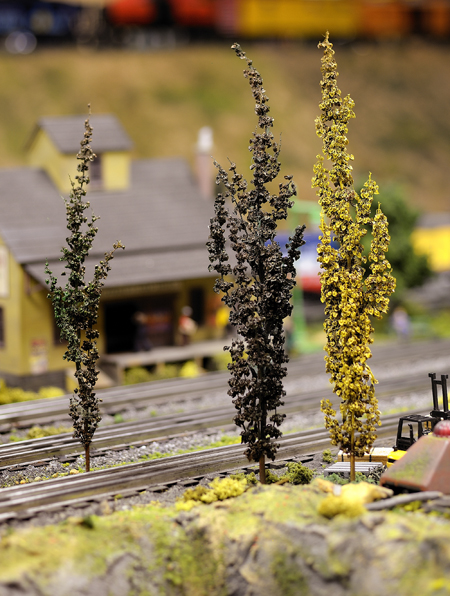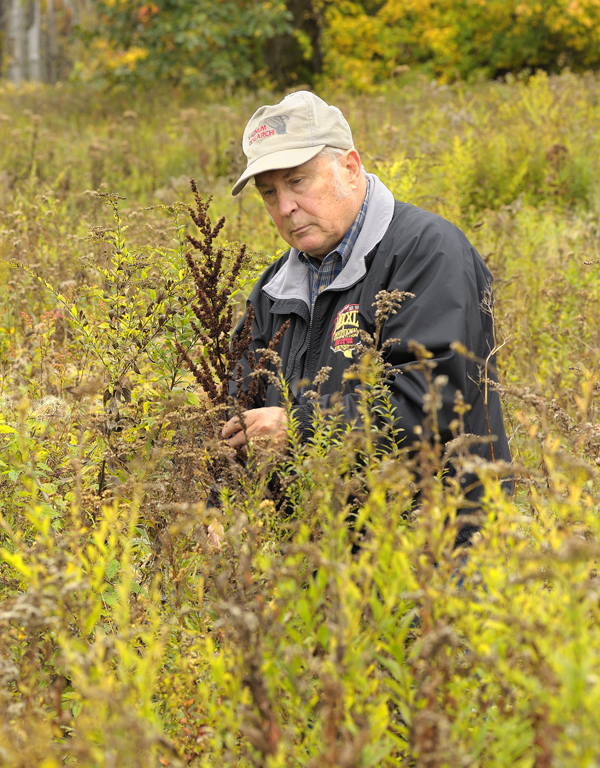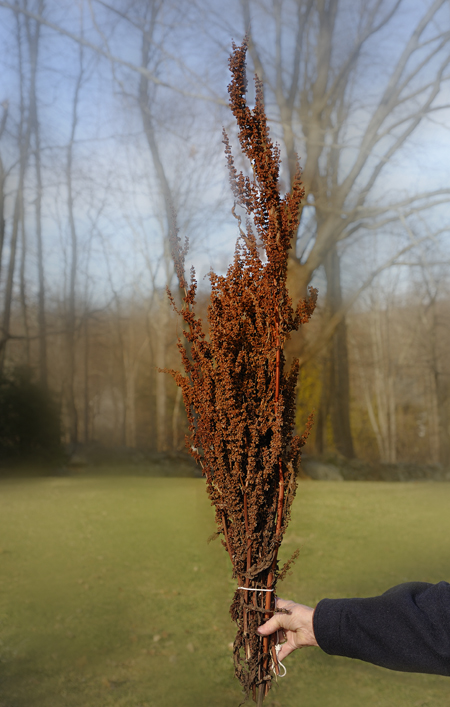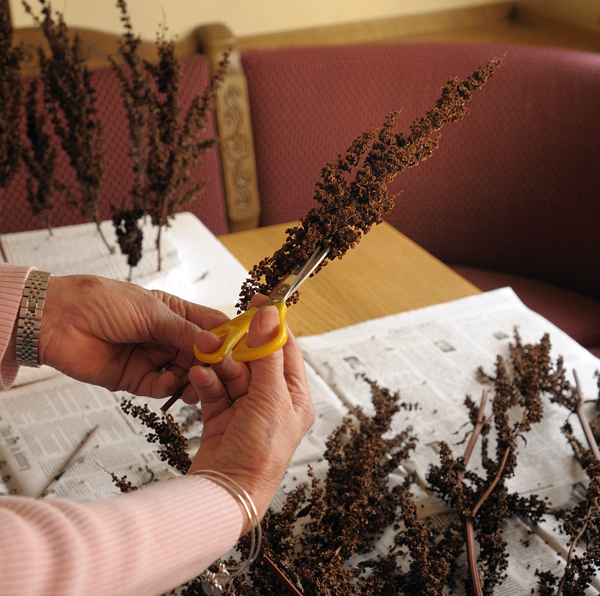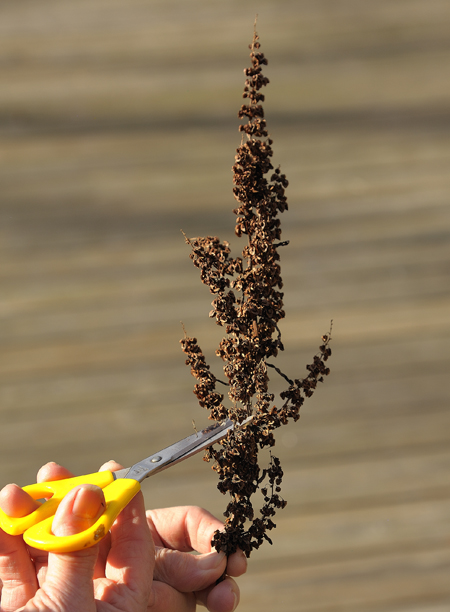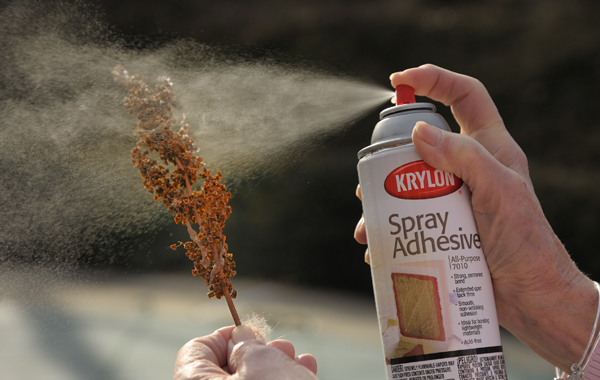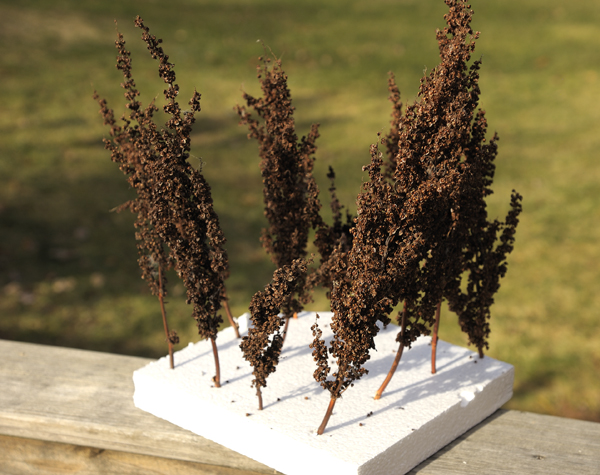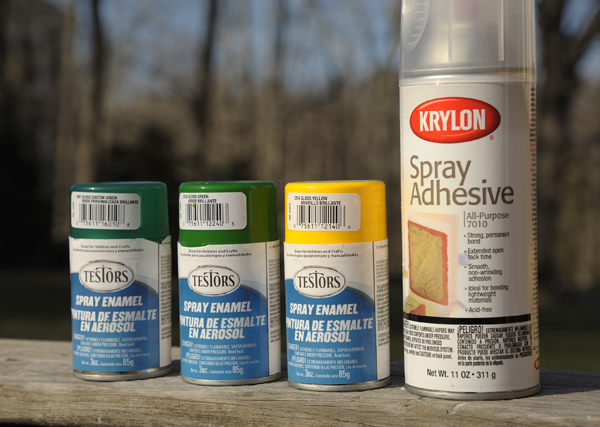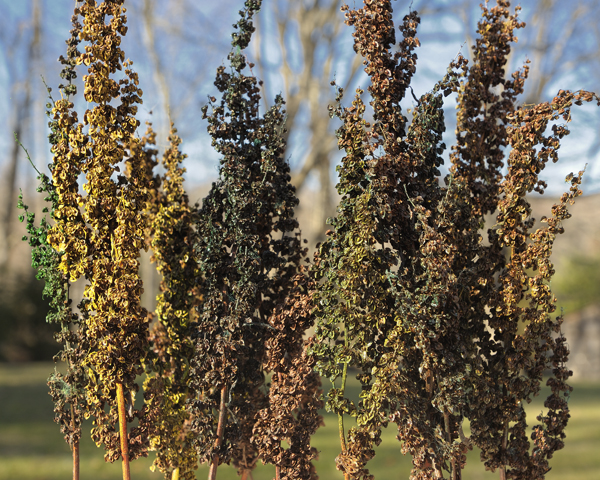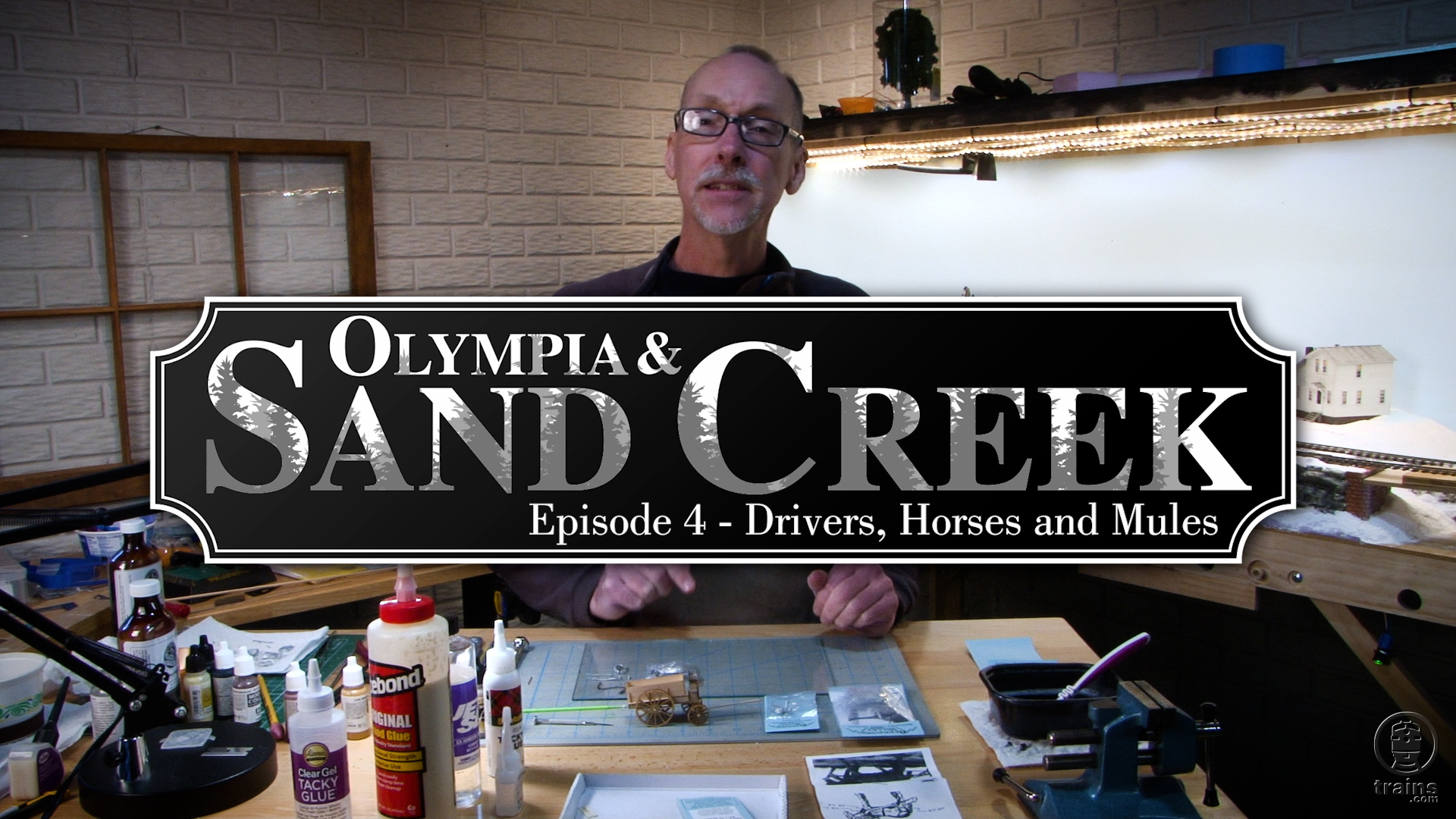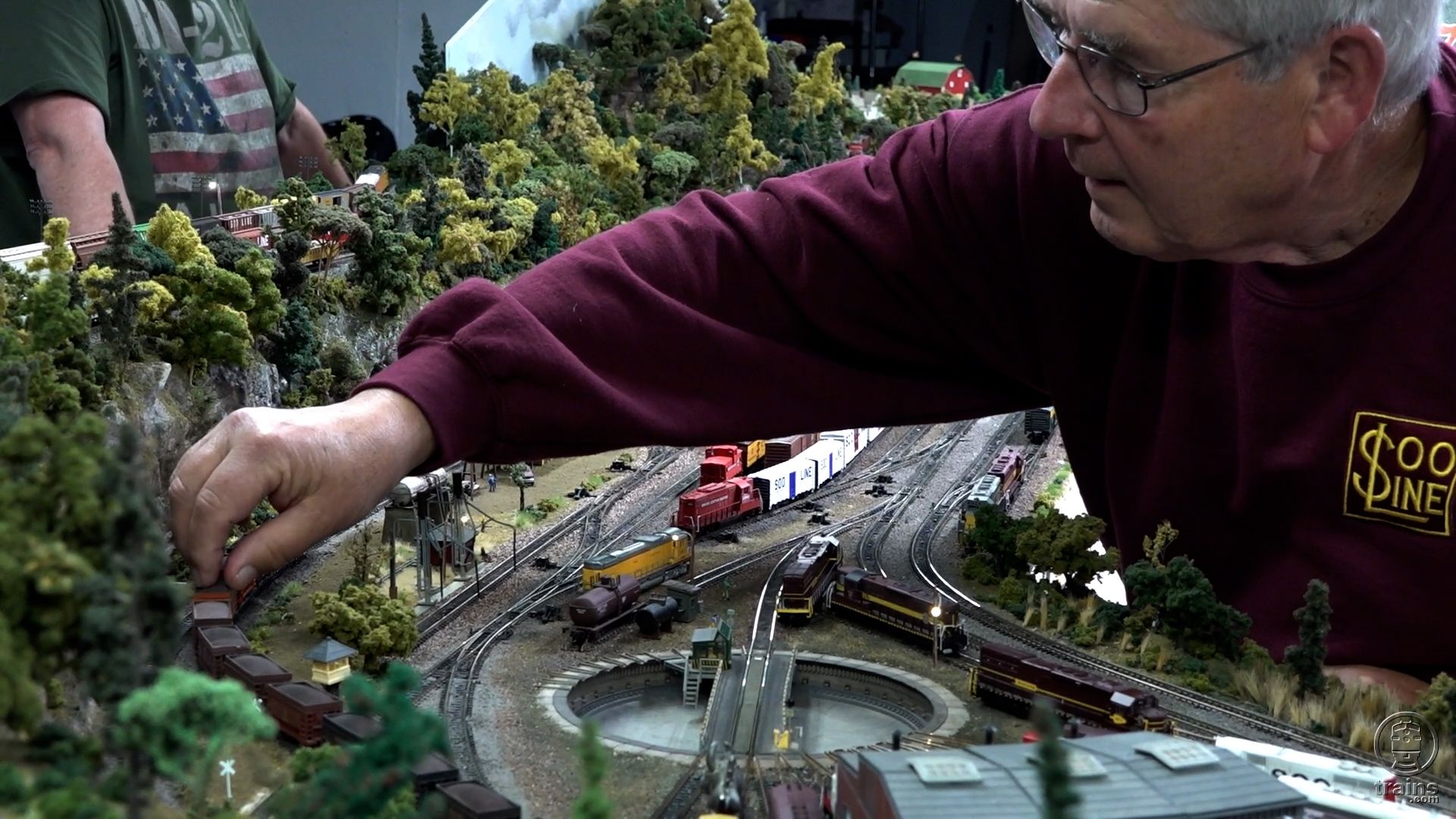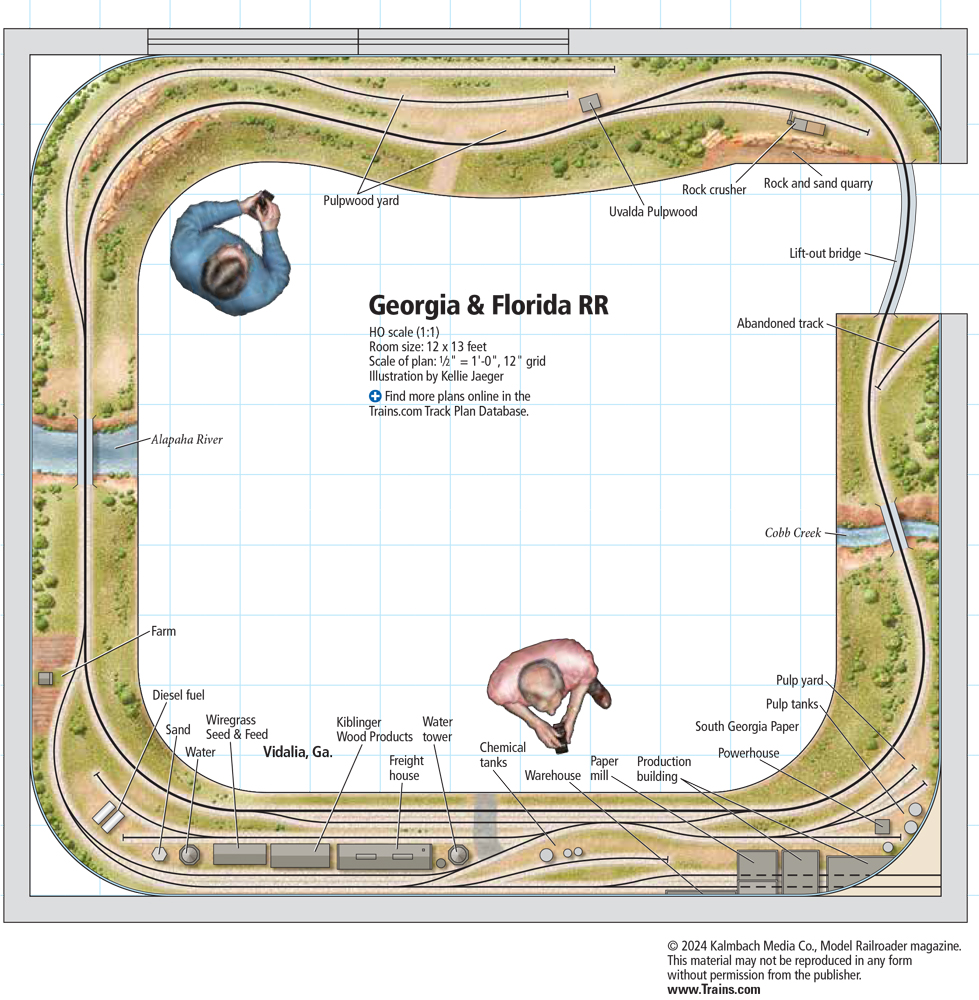Now, hiking around my area for interesting landscape photographs led me to a crop of common wildflowers that I use for trees on my layout. They are easy to gather, look good, and are cheap to make.
The weed is a hardy perennial broadleaf plant called curly dock (also known as yellow dock or curled dock) that usually grows in wet areas or near standing water as would be associated with ditches and wetlands, along roads and unmanaged sites.
Curly dock is found throughout the U.S., so locating this plant is not a problem. When mature it ranges from 18 to 36 inches tall (Photo 1). Curly dock is part of the buckwheat family. When the leaves are roasted, it can be a coffee substitute.
You will be harvesting the plant’s flower stems in the autumn, after the plant has turned a reddish brown. After I pick it, I bundle and hang large clumps of the weed’s flowers in my garage upside down for at least a month to dry out (Photo 2). At this point, all the stems are dry, so handle with caution as you cut them apart to make a variety of trees (Photo 3).
By the way, it is easy to sort everything by size – which usually involves nothing more than cutting off the tops of the plant for full-size, better-looking trees (Photo 4).
The larger stems of the plant have realistic brown tones, perfect for trunks. However, if you want to accent them with a few streaks of a darker brown or black paint, you will add realism.
Take your time in the selection of your trees. After you snip and customize a tree, reach for the Krylon spray adhesive and give each tree a moderate amount of the product. I recommend spraying outside (Photo 5).
As you move along, it’s a good idea to stick each one into some punched holes in a box or a square piece of floral foam to allow the adhesive to drying (Photo 6).
Make sure you get the spray-type adhesive and not the mounting type used for attaching photographs to foam core. It is readily available at your local crafts shop.
While you’re there, pick up three or four cans of spray paint in a few shades of green, and one each of yellow, orange or red if you want the effect of autumn approaching on your layout (Photo 7).
Allowing the adhesive to dry for at least a day, warm up your creative side and grab the spray paints. By using the scraps left over from your selection, trial and error reigns here. After a few tests, you will see how it is done.
The darker green seems to be the best if sprayed lightly to start to bring out the hidden properties of the plant. A lighter green will add some accents to the tree and can be used as a spring base for trees just budding in the darker sections of your layout. Brighter colors like yellow and orange are good for the fall season. To model a winter tree, use the native brown color plant or completely shake the weed as to rid the plant of its natural leaves.
When spraying the trees with the final color, use a pair of work gloves to hold the trees right up to the base of the bottom branches to shield the trunk while keeping its native color. Finally, after the paint has dried, give it a light overcoat with a dulling spray to finish your project. You will be ready for planting (Photo 8).
While working with a plant like curly dock, you will find more uses than trees. Shake the scraps into a piece of newsprint and use them for ground cover. Clumps can be gathered together for larger mountainside coverage, and the smaller pieces fit nicely into a row-by-row orchard.
Happy planting!





